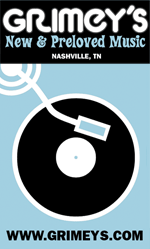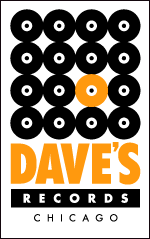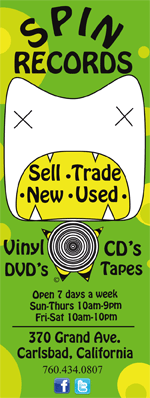
What are we to make of 1976’s Long May You Run by long-time frenemies Stephen Stills and Neil Young? The duo clashed egos in Buffalo Springfield. After the demise of that band, Stills—perhaps in the throes of amnesia—talked Young into joining CS&N, where they went at it tooth and nail again. Then, and this was a pure case of folie a deux, the two men decided to get together yet again to record this collaborative album. THEN, and this is where things get really weird, Young abruptly quit the tour prior to the album’s release by means of a telegram reading “Dear Stephen, funny how some things that start spontaneously end that way. Eat a peach. Neil.” Long May You Run isn’t an album; it’s rock’s equivalent of the Hitler-Stalin Pact, with the exception that neither dictator could have told you the difference between a Stratocaster and Stalingrad.
And that’s not even the whole story, which is complicated by an act of rank duplicity. David Crosby and Graham Nash participated in the sessions in the belief that the finished product would be a CSN&Y reunion LP. But when Crosby and Nash split town (Miami in this case) Stills and Young excised their former bandmates’ contributions from the LP, which might well have led to folk rock gang violence had Nash not been softie and Crosby so drug-addled he’d released an album entitled If Only I Could Remember My Name. One gets the idea that the only reason Crosby kept Nash around was to tell him who he was.
The first thing to be said about Long May You Run is it’s not a collaborative effort at all. There are no dual credits along the lines of Lennon/McCartney or Richards/Jagger and none of the songs on the LP sound as if they were the combined efforts of both men. Young’s five contributions sound like prototypical Young songs and are credited as such; Stills’ contributions sound like prototypical Stills songs and are also credited as such. Which is hardly surprising given they wrote very different sorts of songs and weren’t collaborative types to begin with.
Given these facts it’s hard to escape the suspicion that the two men sequestered themselves in separate studios, recorded their songs with little or no input from the other, then slapped the results on Long May You Run. The two of them may have gotten together on occasion, but it was probably outside the studio’s rear door to hiss at one another while fighting over a joint.
The results, once you get beyond this near-fatal flaw, are mixed. None of LP’s nine songs, with the exception of Young’s charming title track, flunk the smell test, but neither will they stand amongst each artist’s best. Long May You Run makes for an enjoyable listen only if you don’t set your sights too high. One of the oddest things about the LP is the distribution of song credits–five are attributed to Young, and only four by Stills. Why Stills the egomaniac agreed to being one-upped defies comprehension; perhaps he was too drug-addled at the time to count.
In any event, his songs don’t come off as well as Young’s, although I’m hardly an objective judge—while Stills is both a great vocalist and guitar player he’s more folkie than rocker, and I’ve always preferred things the other way around. Young, on the other hand, is both a brilliant folk-rock artist (see After the Gold Rush and Harvest) and rocker, Everybody Knows This Is Nowhere remains the greatest folk-tinged electric guitar blowout of all time.
Let’s start with Stills, whose contributions include “Make Love to You,” a slinky organ-drenched number along the lines of “Love the One You’re With.” I’d like the song better had Stills ditched the flute and prominent backing vocals and stretched out his pair of guitar solos, but the guys in the studio didn’t want my advice and refused to buzz me through the door. The eco-friendly “Black Coral” is too pina colada for my tastes, but get beyond the equatorial rhythms and what you’re left with is a magical mystery tour to the bottom of the sea.
Stills takes us down, 50 or more feet at a time, to where dangers abound, but the sights are wondrous and payoff divine—at the two hundred eighty-seven feet mark Stills show us Jesus, and “it makes sense that he was there.” The Steely Dan-like “Guardian Angel” is Latin-flavored California soft rock and I’d write it off completely were it not for the jazzy piano and the way it grows a backbone towards the end. “12/8 Blues (All the Same)” proves the exception to the rule; a hard rock showcase that brings the Eagles’ “Life in the Fast Lane” to mind, it’s proof positive that Stills could stand up to Young when it came to going feral on the guitar.
Young fares better on Long May You Run. The title track is a loveable slice of nostalgia and stands as an oddball contribution to the hallowed tradition of automotive songs; he even singles out the band that wrote “Little Deuce Coupe” when he fancies his car—a 1948 Buick Roadmaster hearse—passed away and has found its way into their hands: “Maybe the Beach Boys have got you now,” he sings, “With those waves singing “Caroline”/Rollin’ down that empty ocean road/Gettin’ to the surf on time.”
“Midnight on the Bay” is a romantic little ditty on which Young keeps things on the down low, presumably because he doesn’t want to wake the flamingos. “Ocean Girl” (somebody should have escorted the duo out of Miami) is a kissing cousin of “Midnight on the Bay” but with some guitar thrown in for muscle. He also throws in the lines “We’ll be drinkin’ bananas/From long tall glasses,” presumably to prove he’s fully capable of writing dumb lyrics.
The LP’s second-best track is “Let It Shine,” a country rocker that would have fit quite nicely on 1975’s Tonight’s the Night. Seems Neil’s on the road again, but with a Lincoln (“the best thing built by Ford”) instead of his Roadmaster, but he’s traveling by air as well, and finds religion while sitting on his baggage thanks to some friendly Hare Krishnas. But the most important thing to be said about “Let It Shine” is it’s the only song on Long May You Run where the two men actually face off on guitars, and the results make clear what was lost by not doing the same more often.
Finally, there’s “Fontainebleau,” a “Cortez the Killer” soundalike that boasts some fierce guitar and centers on a stay at the elite Miami hotel of the same name, where Yong is lucky to escape its blue-haired ladies with his life. It’s no “Hotel California,” mind you, but there can be no other “Hotel California.” Favorite line? “Who put the palm over my blond?”
What were Stills and Young thinking? If it was a competition to see who could write the better songs Young came out the winner. But as it is, Long May You Run stands as a case study in musical schizophrenia and suffers as a result. If you’re a Young fan like me, you’re left with some songs by Stills you’ll never listen to; if you’re a Stills fan the converse is true. The damn thing should be half-price or come with a chainsaw to cut it in two. But it isn’t, and doesn’t, and I for one am not buying it.
GRADED ON A CURVE:
B-










































